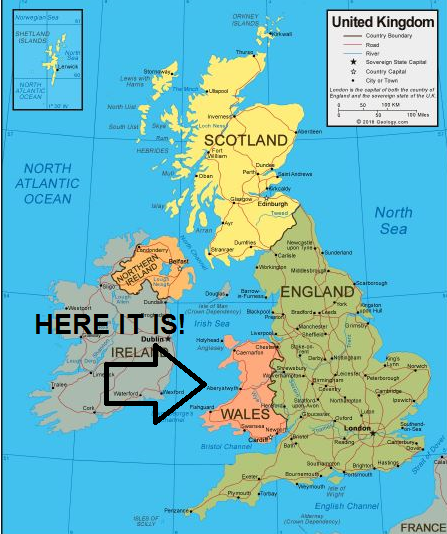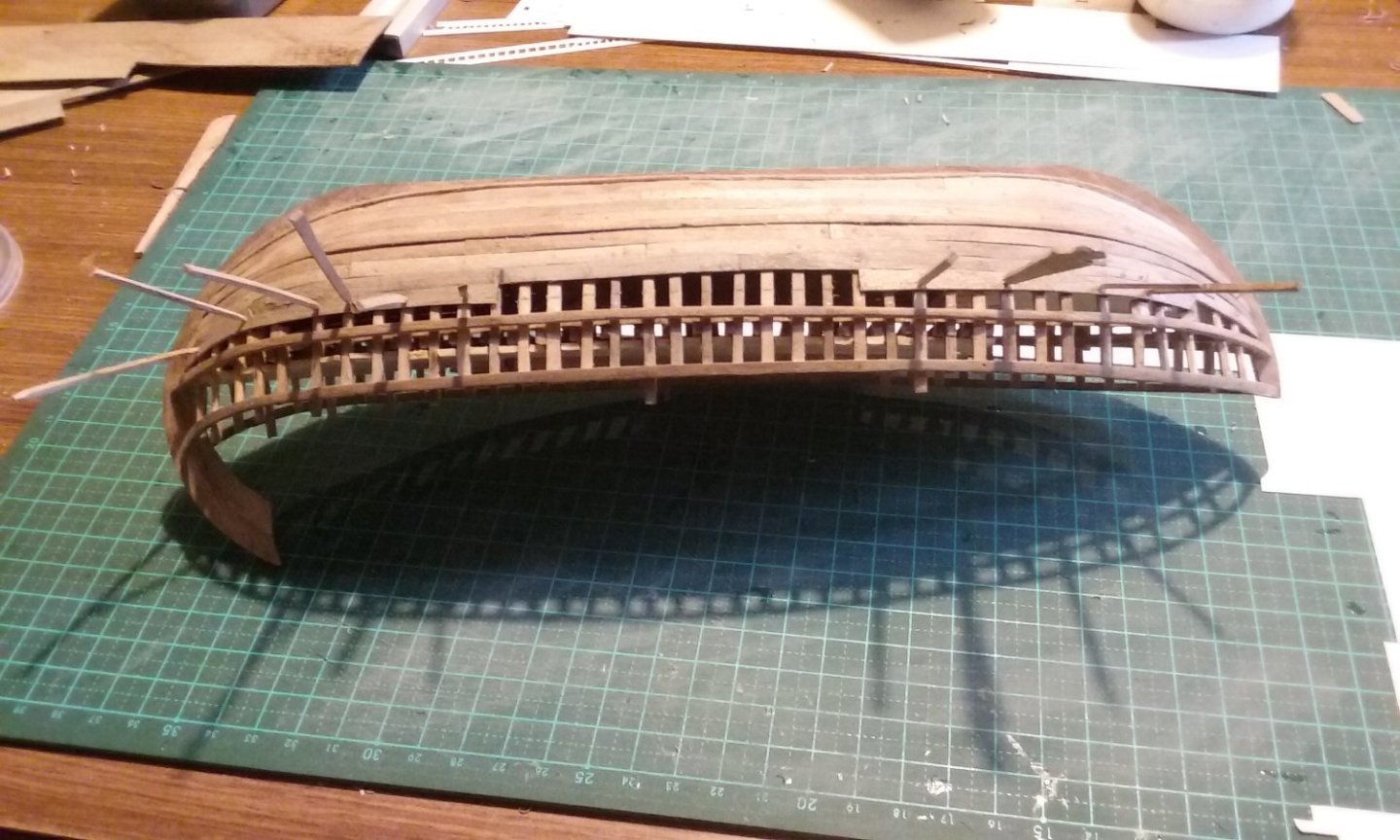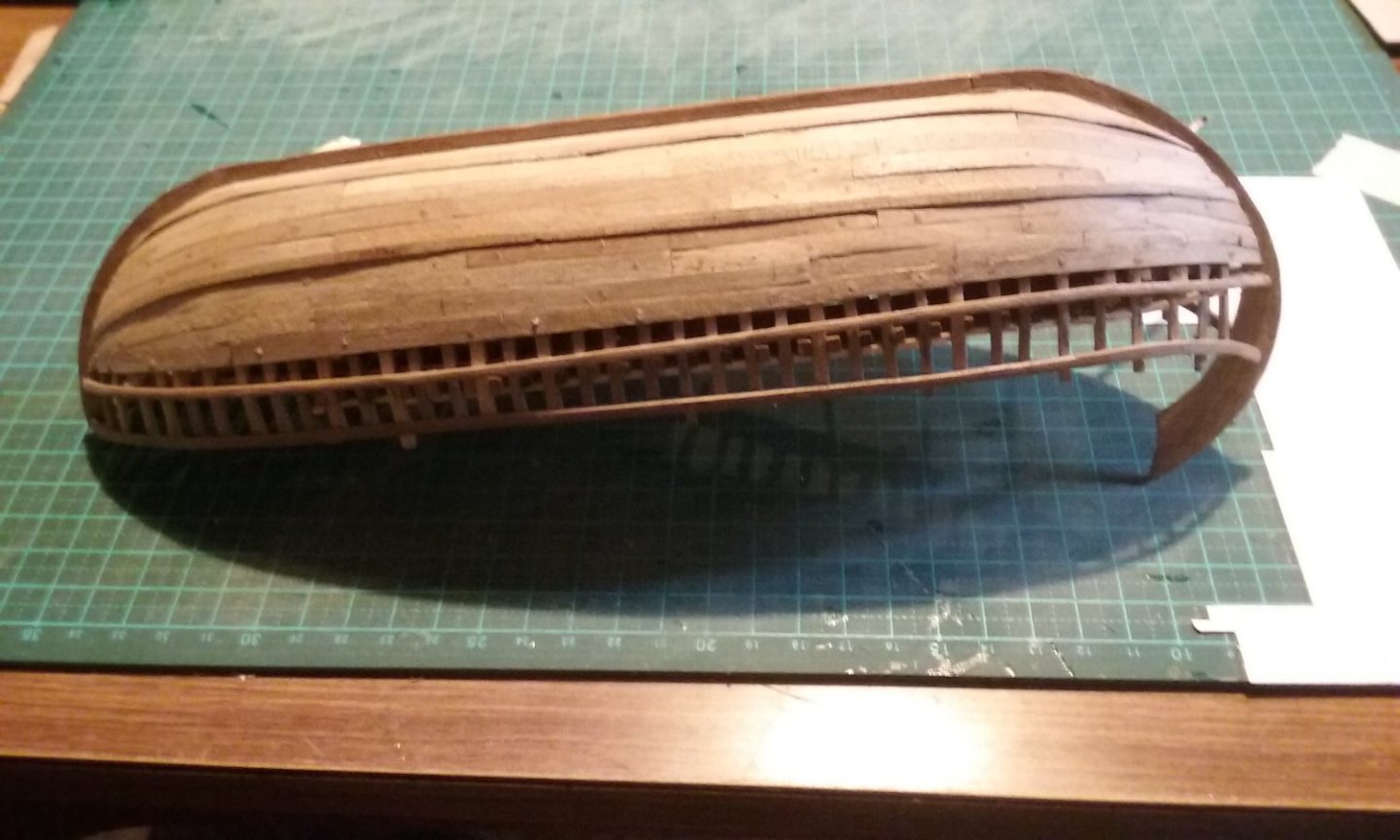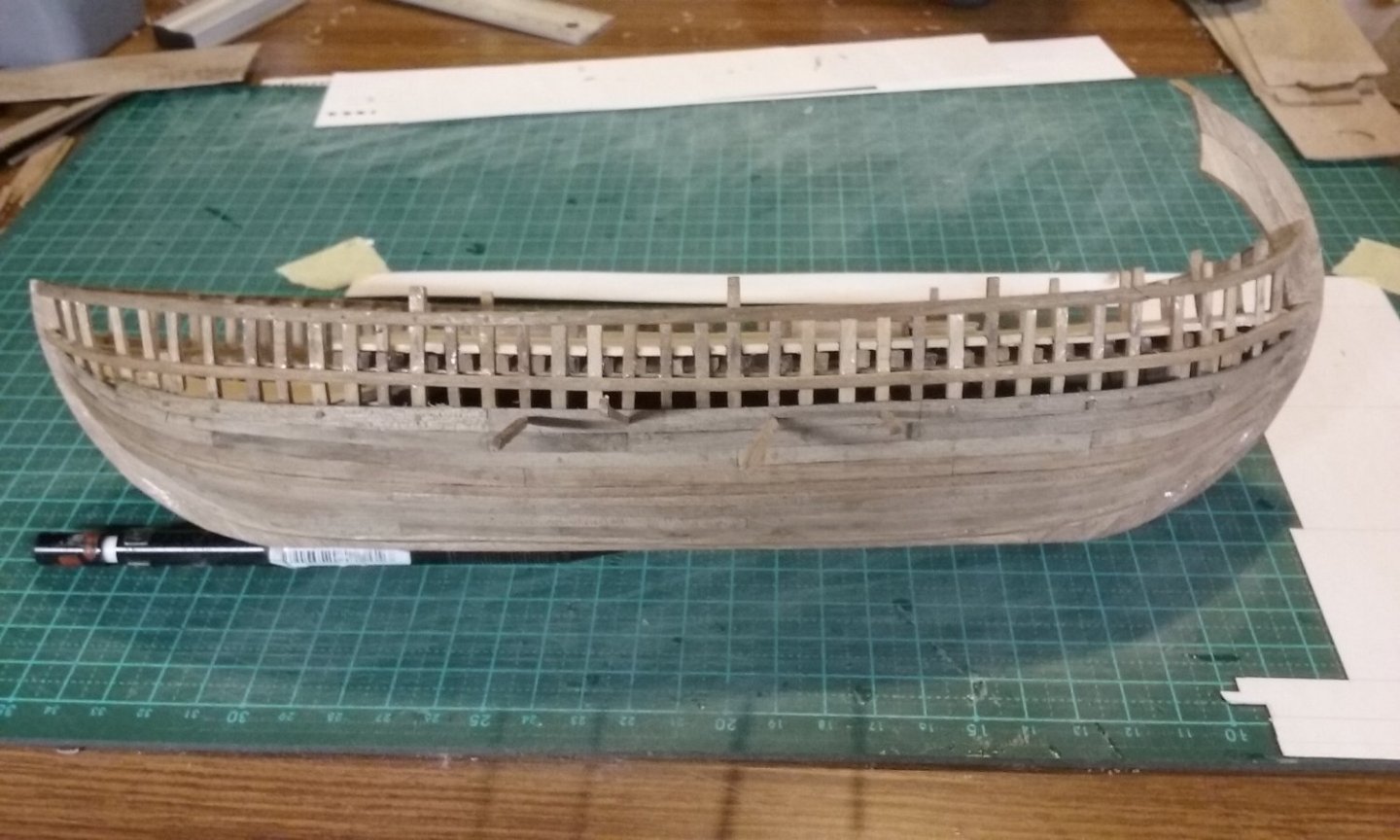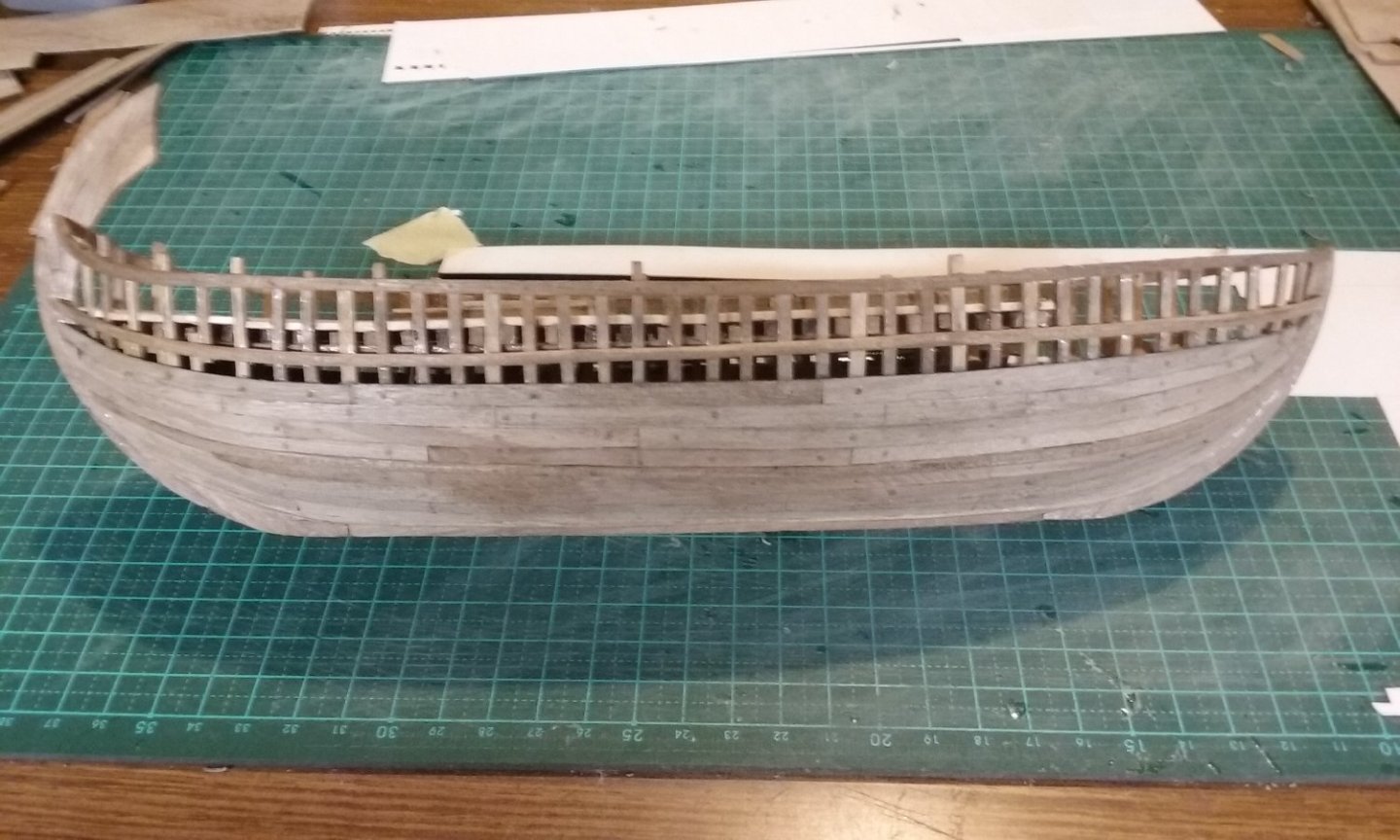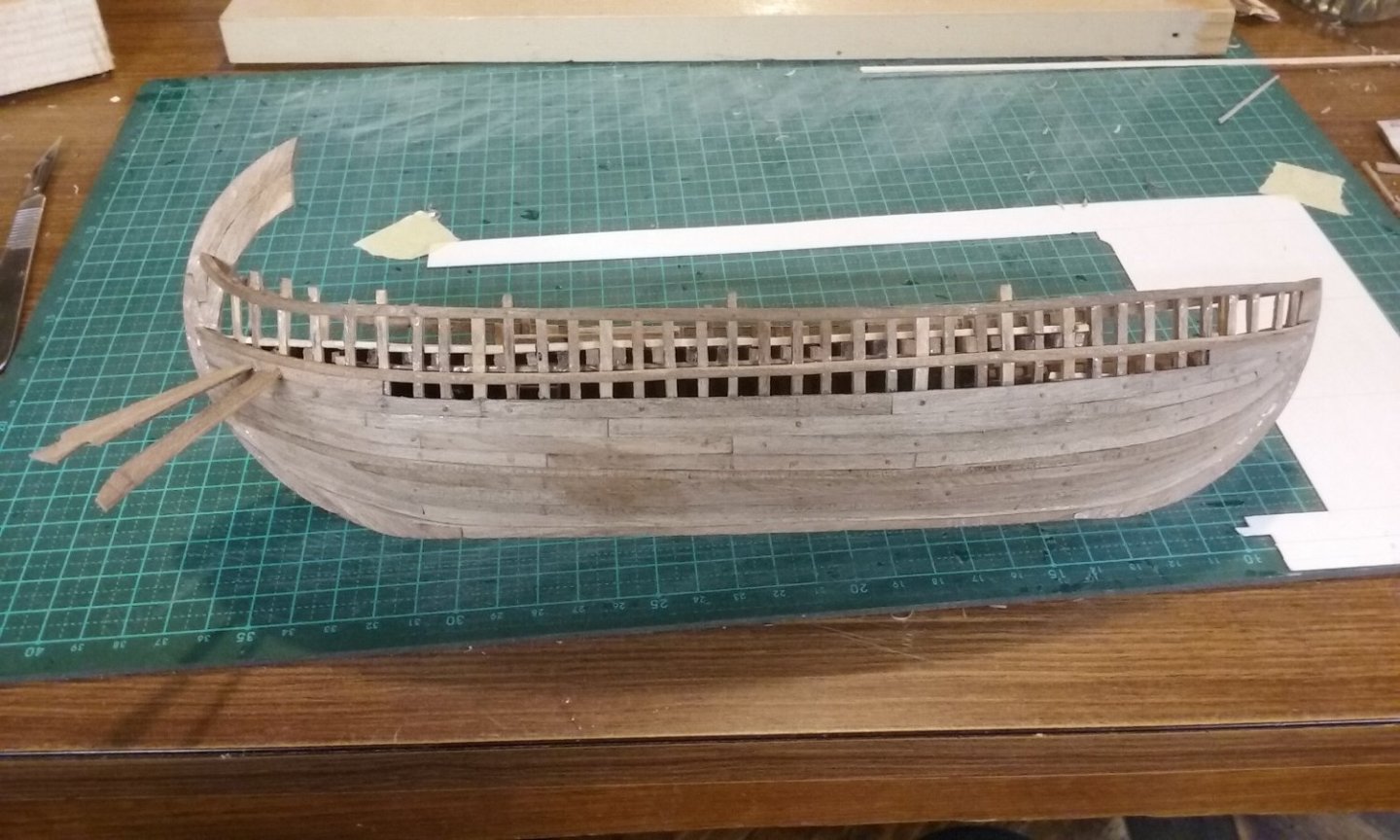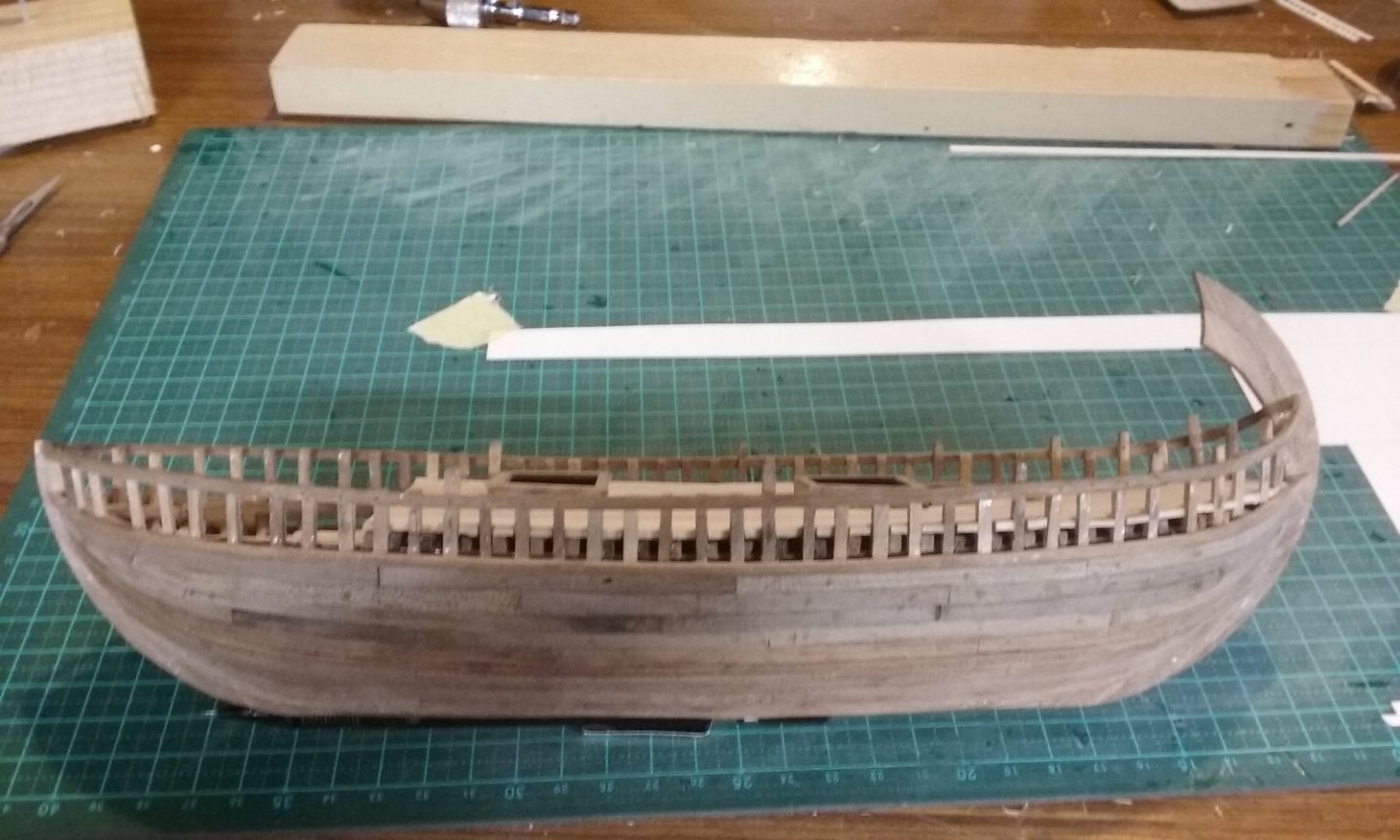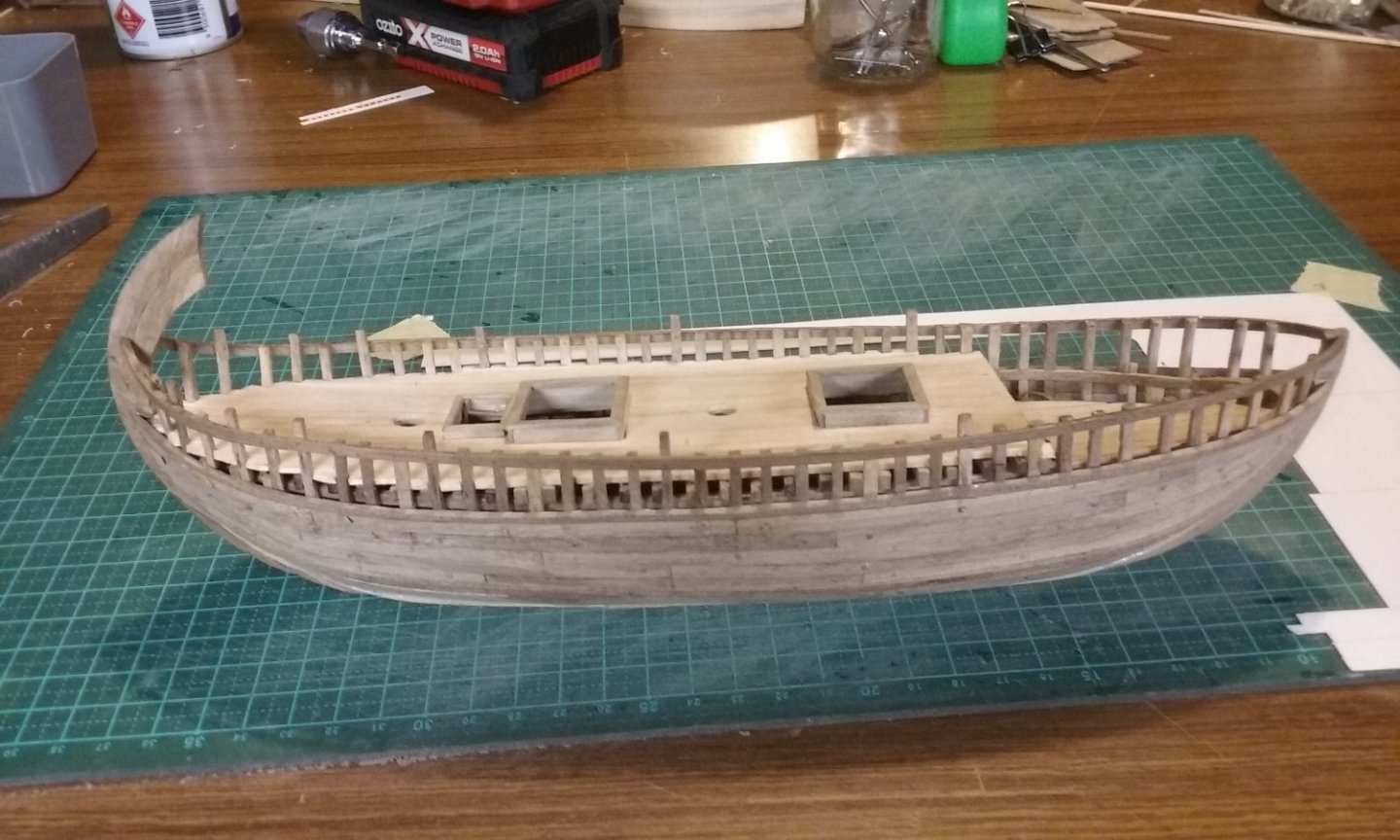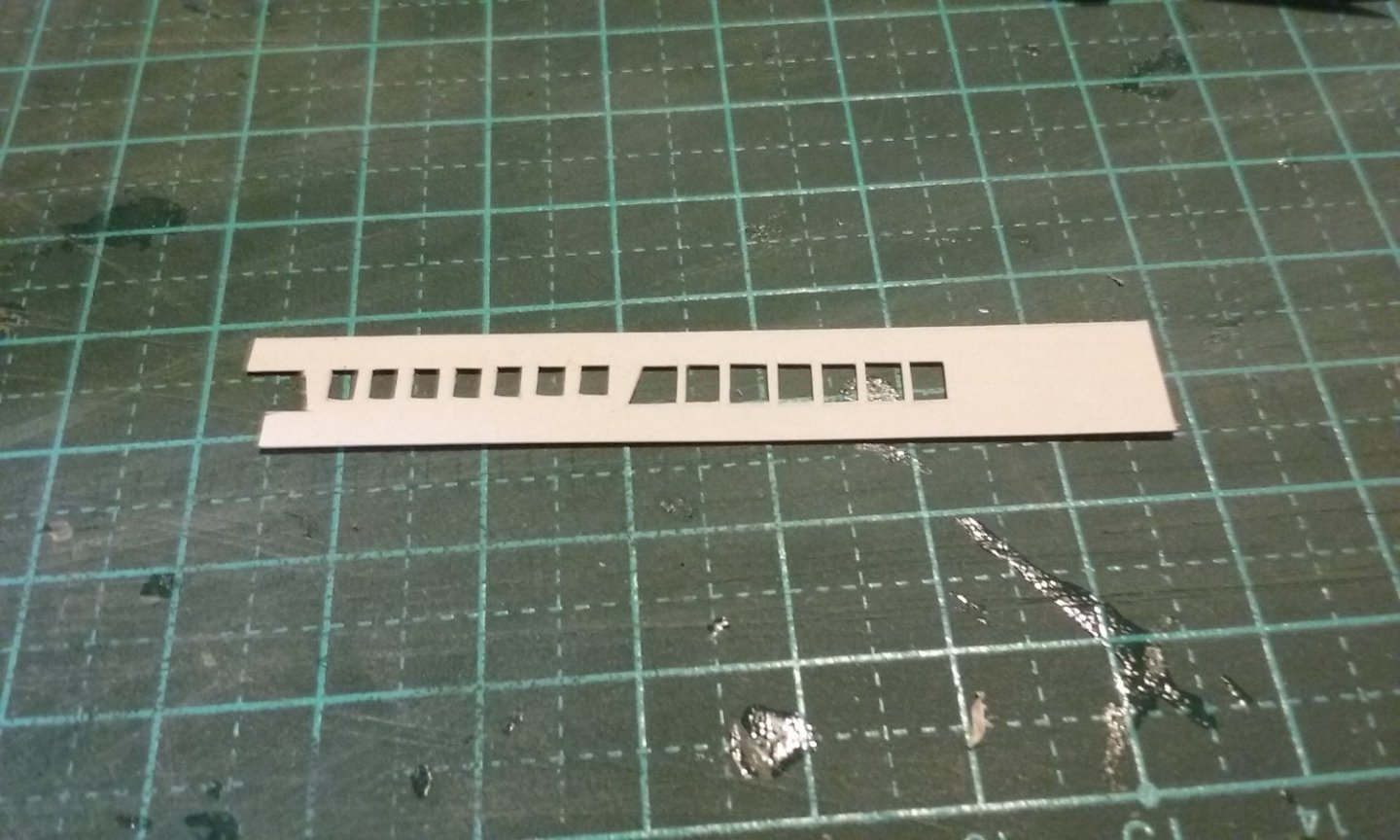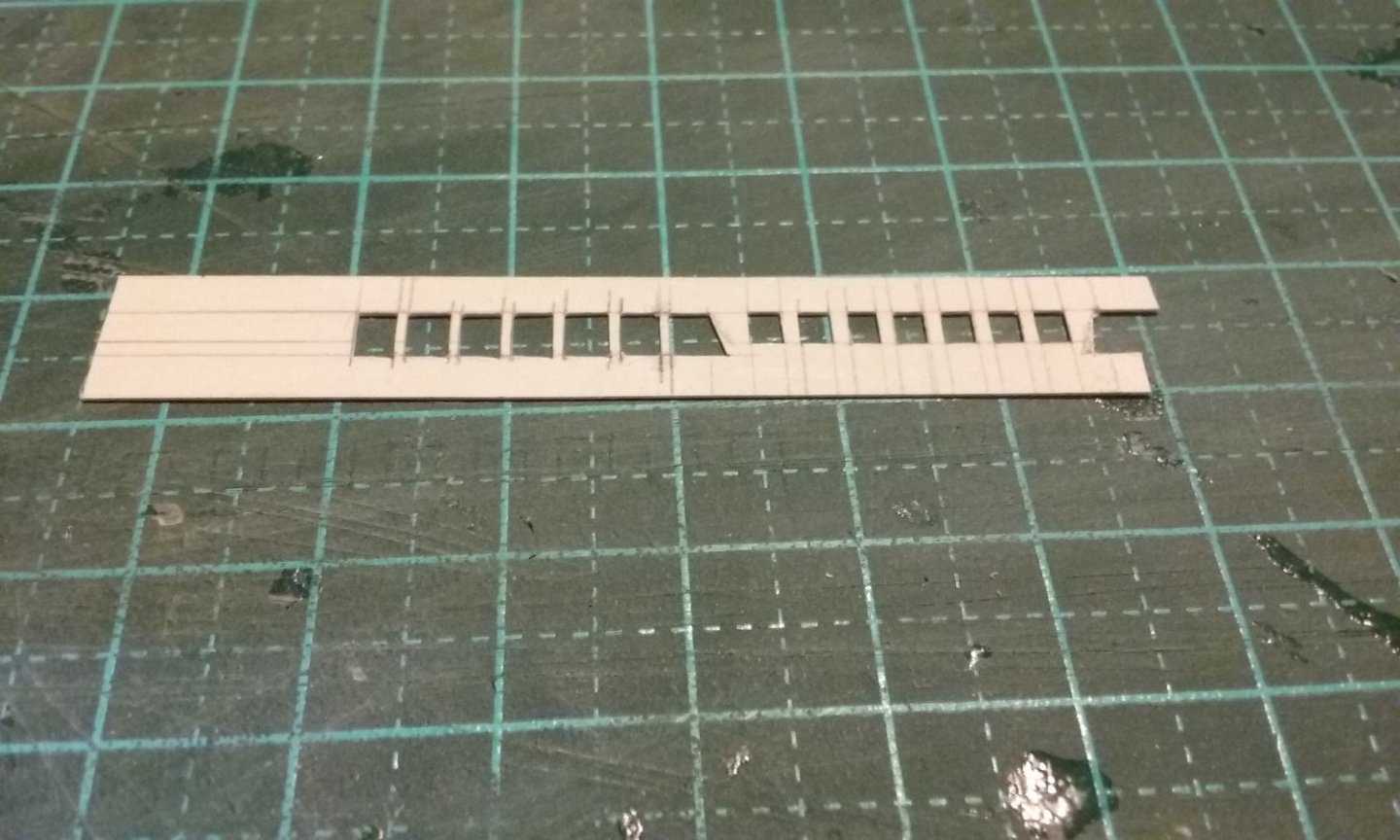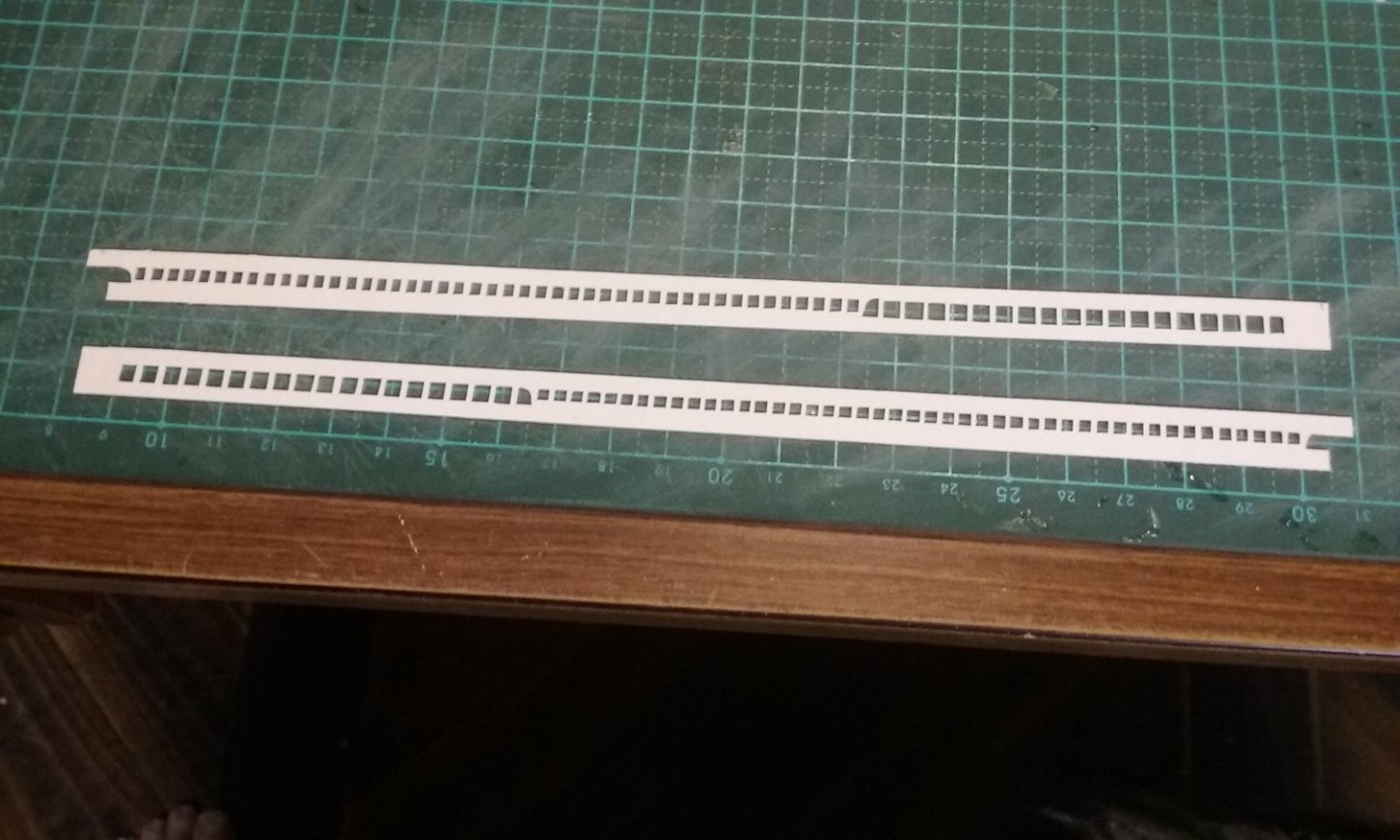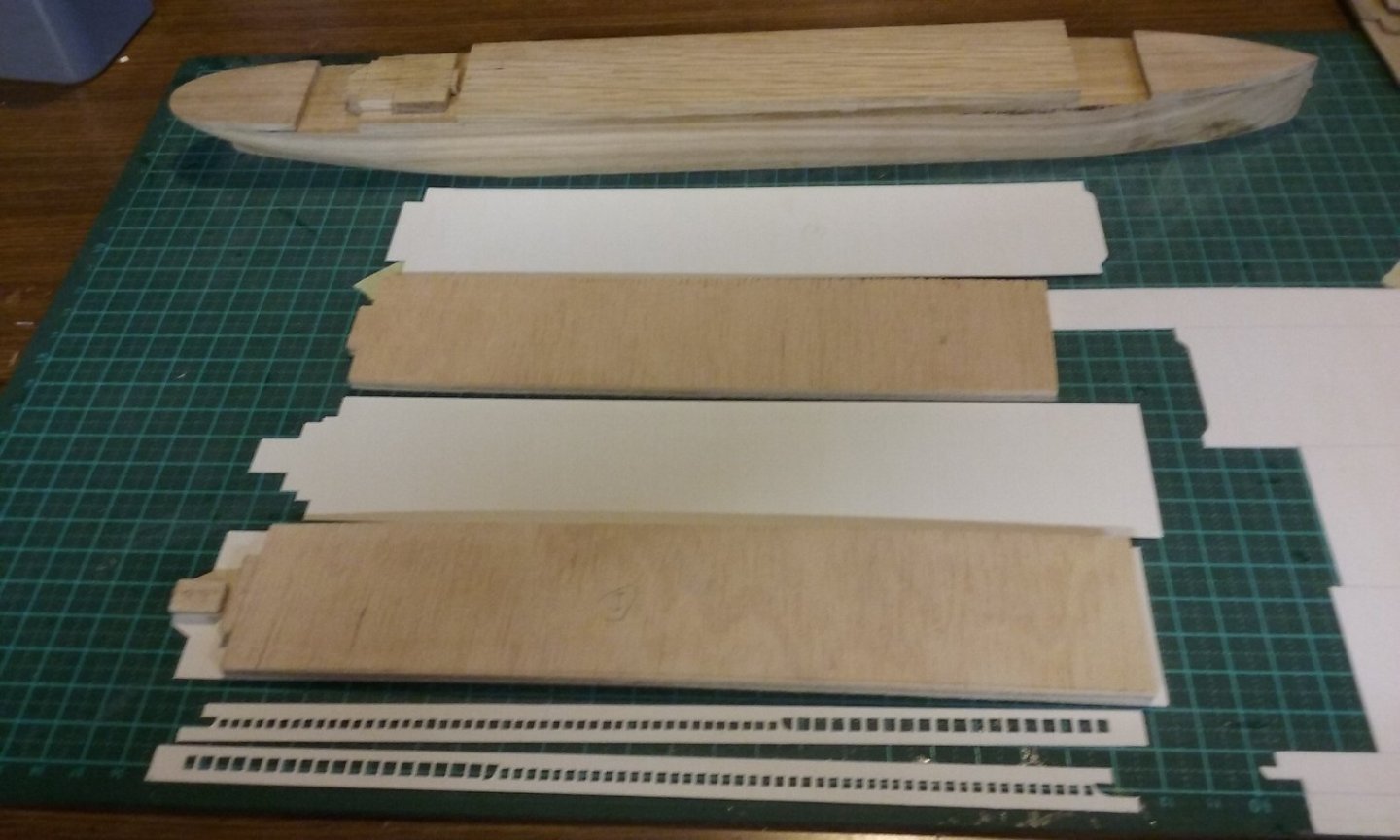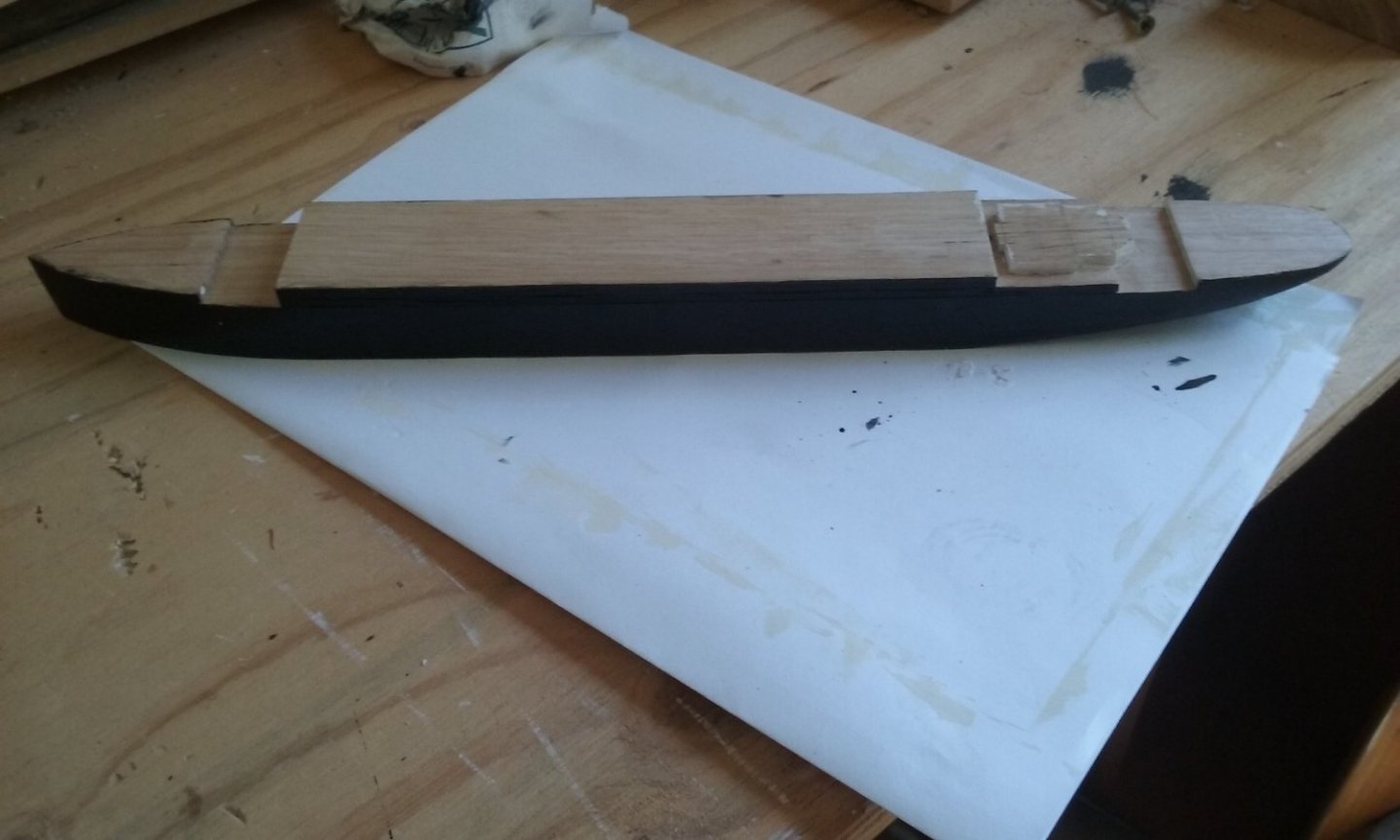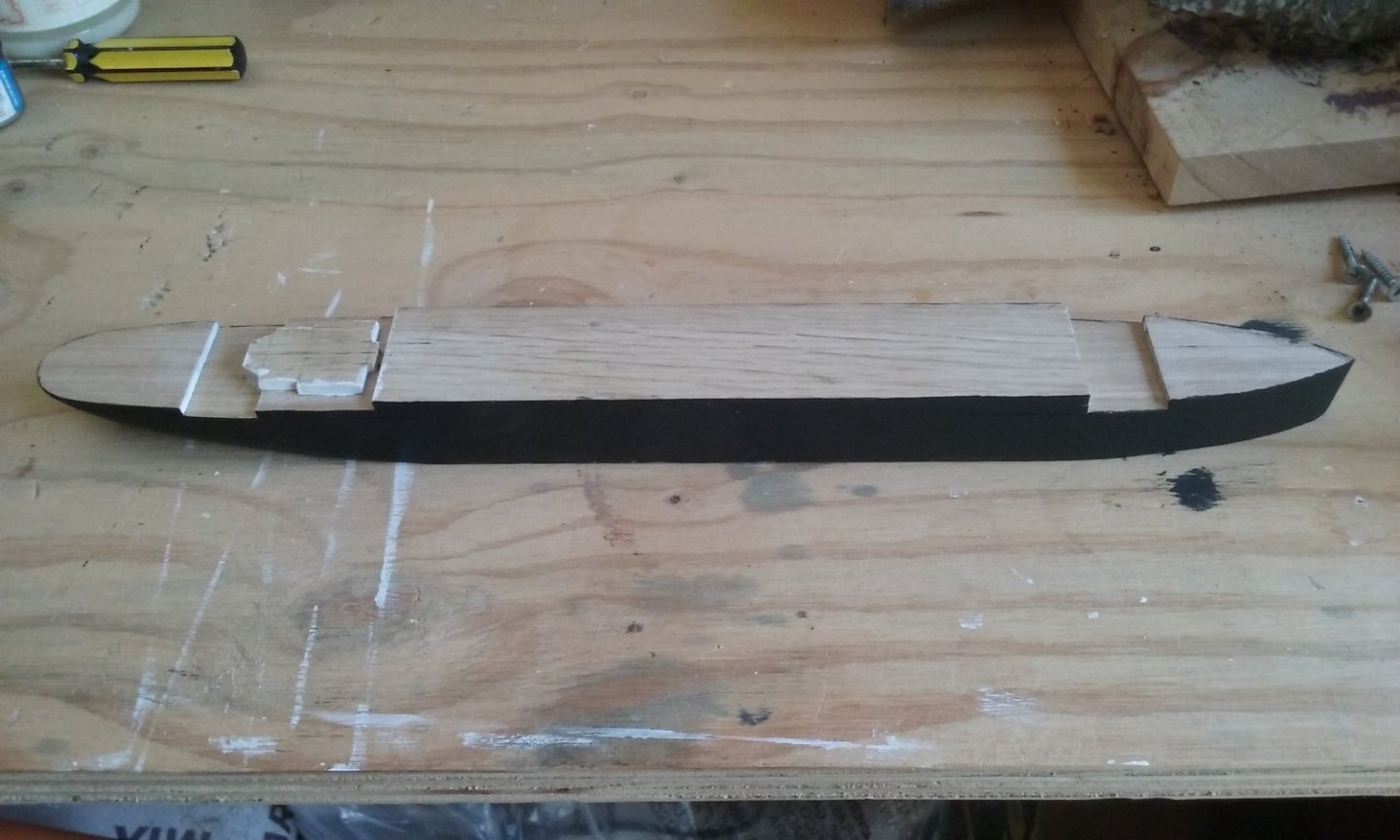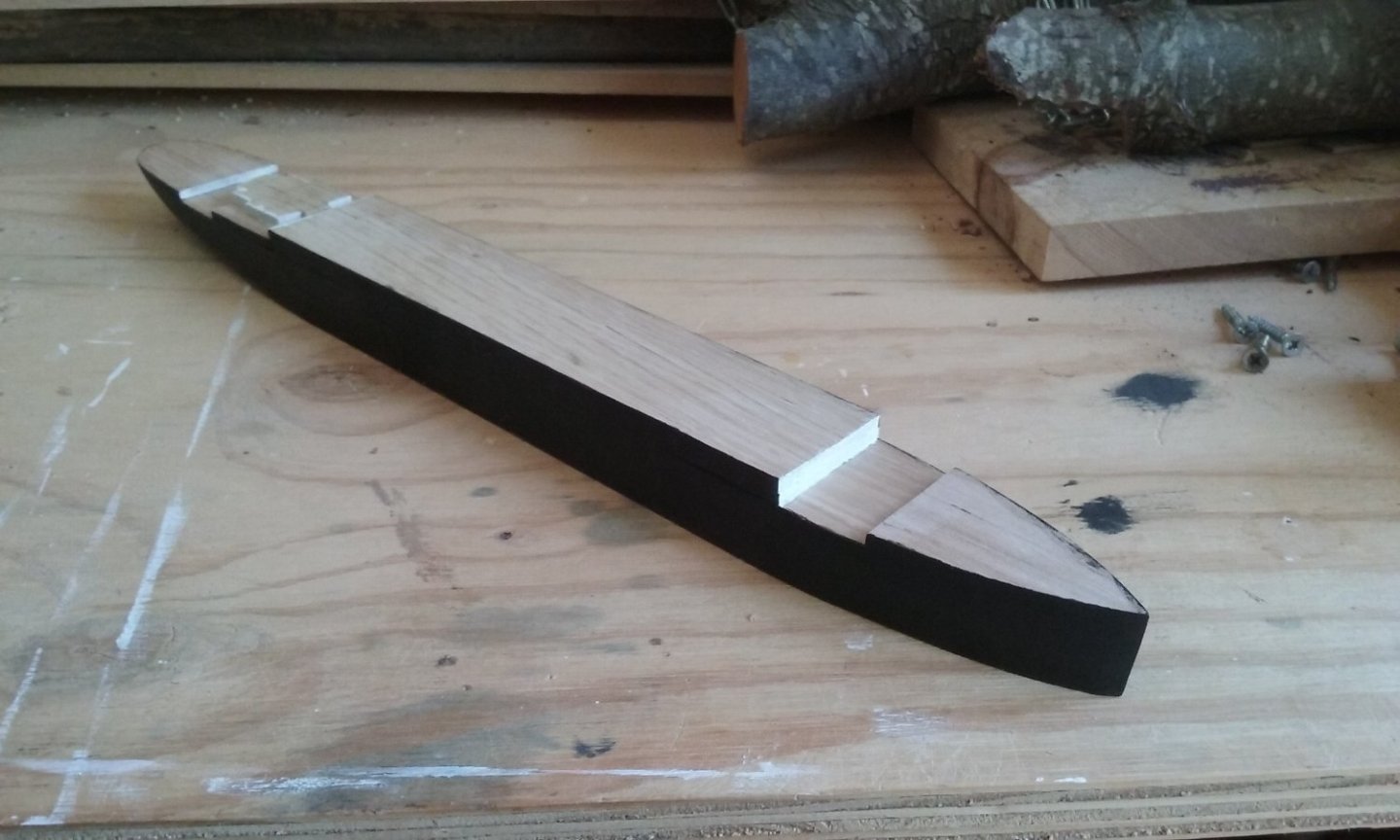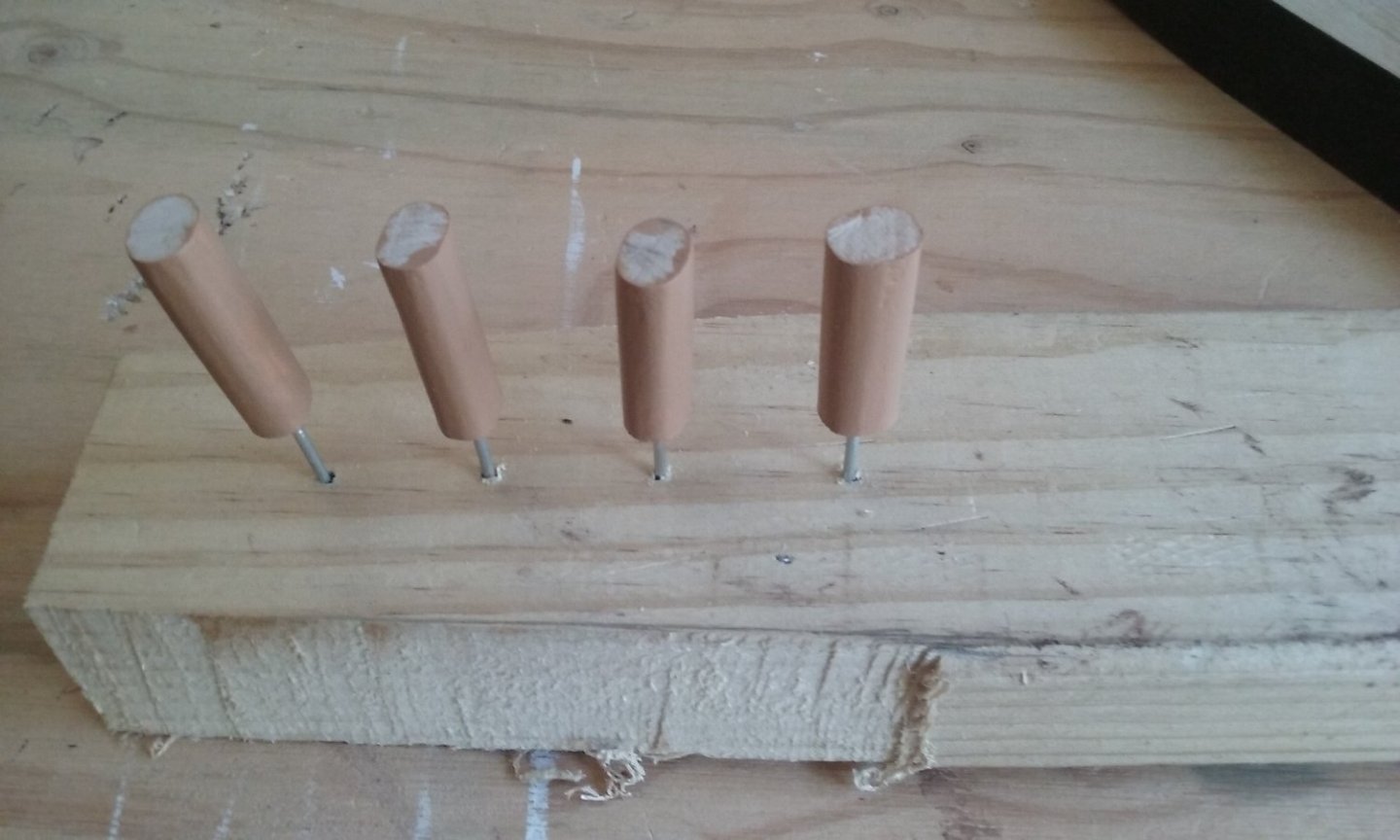-
Posts
7,989 -
Joined
-
Last visited
Content Type
Profiles
Forums
Gallery
Events
Everything posted by Louie da fly
-
Beautiful job, mate. She looks very good. It wouldn't be a proper ship build if you didn't learn something to do differently next time Regarding small tweezers, have a look at the ones used for personal grooming. I bought a set of them, all with different 'business ends' quite cheaply at s department store. Steven
- 27 replies
-
- Slavic Longship
- Falkonet
-
(and 2 more)
Tagged with:
-
Beautiful work (as usual), Greg. I love your 20th century warships; even though it's not something I'd want to do I can recognise quality work when I see it and be impressed by it. Steven
- 233 replies
-
Allanyed, I'm attaching (my own) translation of the article that appeared in Archaeonautica, but looking more carefully at the cross sections in Part 6 I may have been misled by the midships cross-section to think the wale lined up with the main deck throughout the length of the ship. Further inspection reveals that the wale is by no means present in all the sections level with the main - by which I mean the middle deck - between the orlop and the upper deck as shown in Fig. 50 (Cross-section at floor timber W70). To help with interpretation of the drawings, note that the partial sections (all of the ship that survived, unfortunately) are of the vessel as she was found - lying on her port side, so the keel is on the right of each section. Thank you for bringing this to my attention - I'm planning to tackle Lomellina as my next build, so I don't want to get it wrong. Steven Archaeonautica Lomellina article - English.pdf
-
Yes, I could have explained it in my previous post, but it was more fun to keep them in suspenders for awhile . . . Steven
- 30 replies
-
- roman
- merchantman
-
(and 2 more)
Tagged with:
-
Is that where you keep the jousting sticks? Steven
- 30 replies
-
- roman
- merchantman
-
(and 2 more)
Tagged with:
-
Very impressive! It wasn't till I saw that photo that the 1:25 scale sank in . . . Where do you find the room for all these models? Steven
- 30 replies
-
- roman
- merchantman
-
(and 2 more)
Tagged with:
-
- 508 replies
-
They'd better be! Much more work in this model than $200 worth! Oh, no. Woodrat beats me hands down. From 1600 B.C.E. Mycenaean galley to 1440 C.E. carrack/nao - that's over 3000 years - still more if we include his 18th century Gros Ventre. But I think I can claim the widest chronological gap for two builds going on simultaneously. Steven
-
Interesting. In New Zealand, the Maori dug-out war canoe is called a Waka, and the building process (including the ceremonial and religious aspect) was very similar to that of the Hawaiians - see John Allen's fascinating build at
- 174 replies
-
- Waa Kaulua
- bottle
-
(and 1 more)
Tagged with:
-
You've done a beautiful job with this model. You can be justly proud of your results. Steven
- 13 replies
-
- Golden Hind
- Airfix
-
(and 1 more)
Tagged with:
-
Thanks everybody for the likes, and Javelin for the comment. Brand-new No. 11 blade in a craft knife. Steven
-
Change of plan. The decks are to be made of card, and apart from areas where they are open underneath, each will be supported by a layer of sheet wood, as thick as the distance between the decks. And the windows/portholes/whatever between decks will be cut into card and glued onto the sides of these layers of wood. The edges of the layers painted black, to suggest empty space behind the openings. Though I'm thankful to Grandpa Phil for suggesting clear primer, I decided to go with white enamel instead, so all the "white" bits will match in colour. I did a test piece first: The enamel (Revell tiny tin) turned out to do the same job of stiffening as the primer probably does - nice clean cuts. Reverse side with the openings marked out in pencil: And the "face" side: Here are the first two pieces: And all the components: Hull painted black, and the edges of the "tweendecks" structures painted white where they can be seen (except at the break of the forecastle - I'm going to try gluing card onto that face and see how that turns out. Note that the forecastle and poop actually weren't that high - the extra height was made up by bulwarks, but I've oversimplified the build (also I hadn't realised about the bulwarks till too late ). A little tidying up needing to be done, but overall I'm pretty happy with how it's going now. Oh, and the funnels (started with dowel and shaved it down to oval shape). Paint drying. Once that's complete I'll paint the characteristic black "hoops" at the top. Steven
-
Very good idea with the brass pin. I've certainly come across the same problem with things breaking off, and I ended up pinning items like this in place. Steven
-
Sounds good. This kind of information is usually confined to archaeologists - to see it in a model would be of great value. Steven
- 30 replies
-
- roman
- merchantman
-
(and 2 more)
Tagged with:
-
Yeah, I thought of that, but there would probably be gluing problems (I haven't used plastic sheet before) so I think card would probably be more suitable. Here are the hull and deck and intermediate (tweendecks) structures so far. The decks themselves I made from thin sheets of walnut but unfortunately they have "cupped" and I had to resign myself to heat straightening them. Then I remembered I'd been given some very thin sheets of (maple?) from cigar boxes. Nice and flat, so I'll be using them instead. Steven
-
Nice idea, mate. This would work with plastic ones, too - so no probs with clamps getting glued to the ship (well, not if you use PVA glue, anyway).
- 24 replies
-
- Ships boat
- Ships of Pavel Nikitin
-
(and 1 more)
Tagged with:
About us
Modelshipworld - Advancing Ship Modeling through Research
SSL Secured
Your security is important for us so this Website is SSL-Secured
NRG Mailing Address
Nautical Research Guild
237 South Lincoln Street
Westmont IL, 60559-1917
Model Ship World ® and the MSW logo are Registered Trademarks, and belong to the Nautical Research Guild (United States Patent and Trademark Office: No. 6,929,264 & No. 6,929,274, registered Dec. 20, 2022)
Helpful Links
About the NRG
If you enjoy building ship models that are historically accurate as well as beautiful, then The Nautical Research Guild (NRG) is just right for you.
The Guild is a non-profit educational organization whose mission is to “Advance Ship Modeling Through Research”. We provide support to our members in their efforts to raise the quality of their model ships.
The Nautical Research Guild has published our world-renowned quarterly magazine, The Nautical Research Journal, since 1955. The pages of the Journal are full of articles by accomplished ship modelers who show you how they create those exquisite details on their models, and by maritime historians who show you the correct details to build. The Journal is available in both print and digital editions. Go to the NRG web site (www.thenrg.org) to download a complimentary digital copy of the Journal. The NRG also publishes plan sets, books and compilations of back issues of the Journal and the former Ships in Scale and Model Ship Builder magazines.



